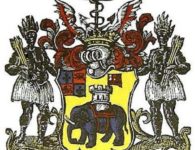|
Master Juba’s real name was William Henry Lane. He was born a free black man in Rhode Island in 1825, and began his career as a performer in minstrel shows. He played the banjo and the tambourine and could imitate the moves of all of the best dancers of his time. Later he created his own innovations and danced his way to international fame. In 1842, the great English novelist Charles Dickens toured the United States and wrote a book about it called American Notes. He described a visit to Almack’s, a dance hall in Manhattan’s notorious Five Points, and a dancer by the name of Master Juba: “The corpulent black fiddler, and his friend who plays the tambourine, stamp upon the boarding of the small raised orchestra in which they sit, and play a lively measure. Five or six couple come upon the floor, marshalled by a lively young negro, who is the wit of the assembly, and the greatest dancer known.”
|
||





















1 Comment
Hello blogger, do you monetize your blackthen.com ?
There is easy way to earn decent money every month, just
search on youtube : How to earn with wordai 4